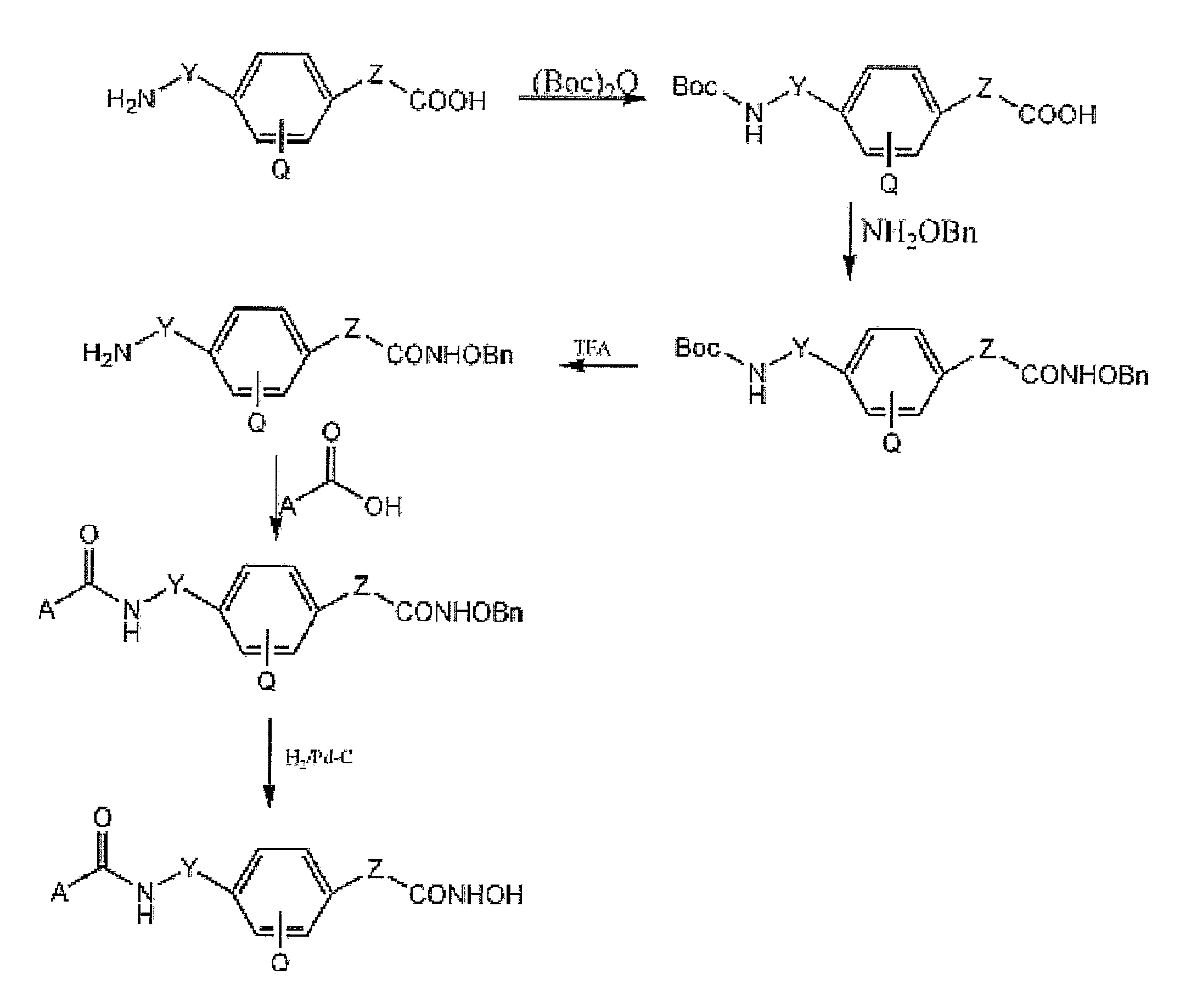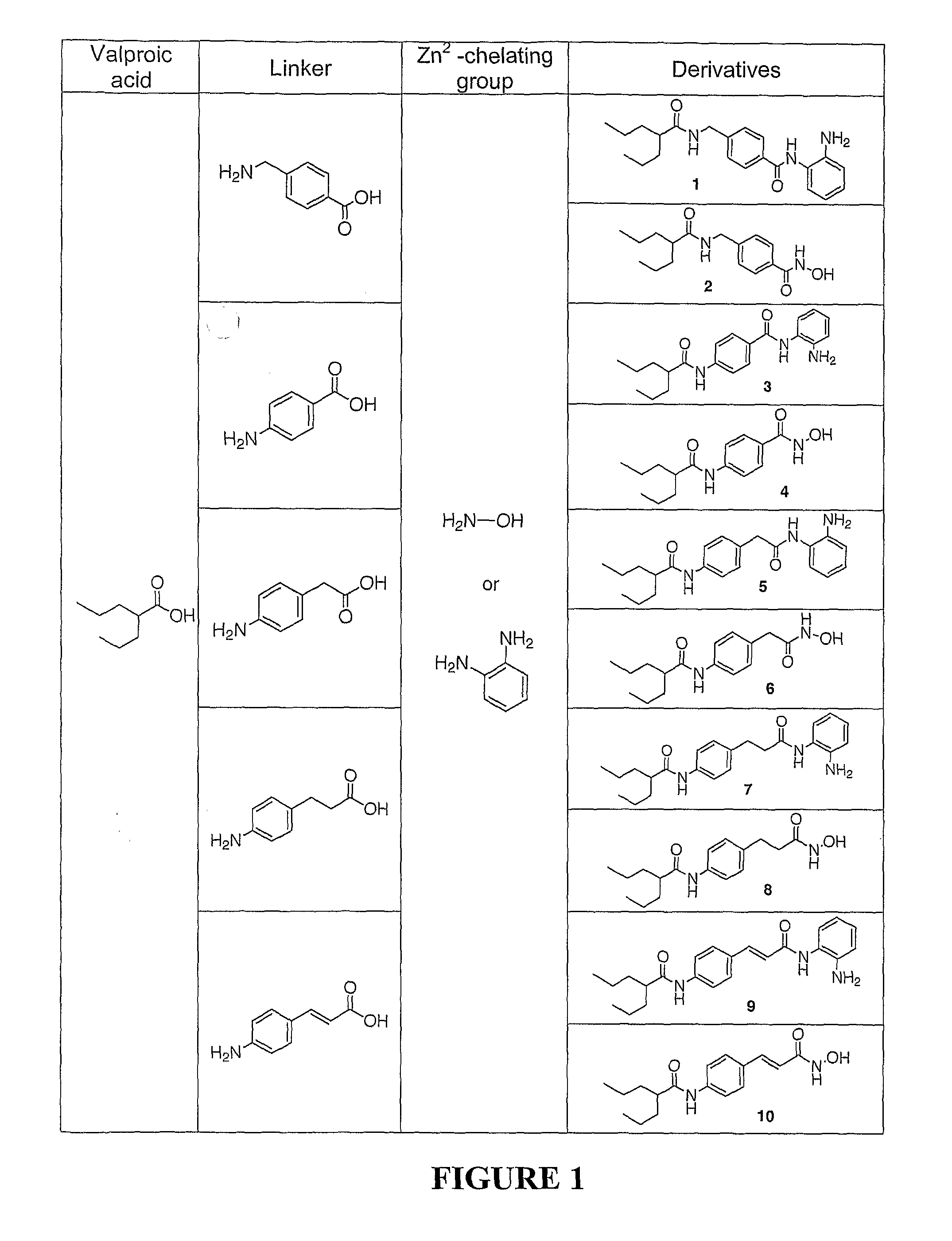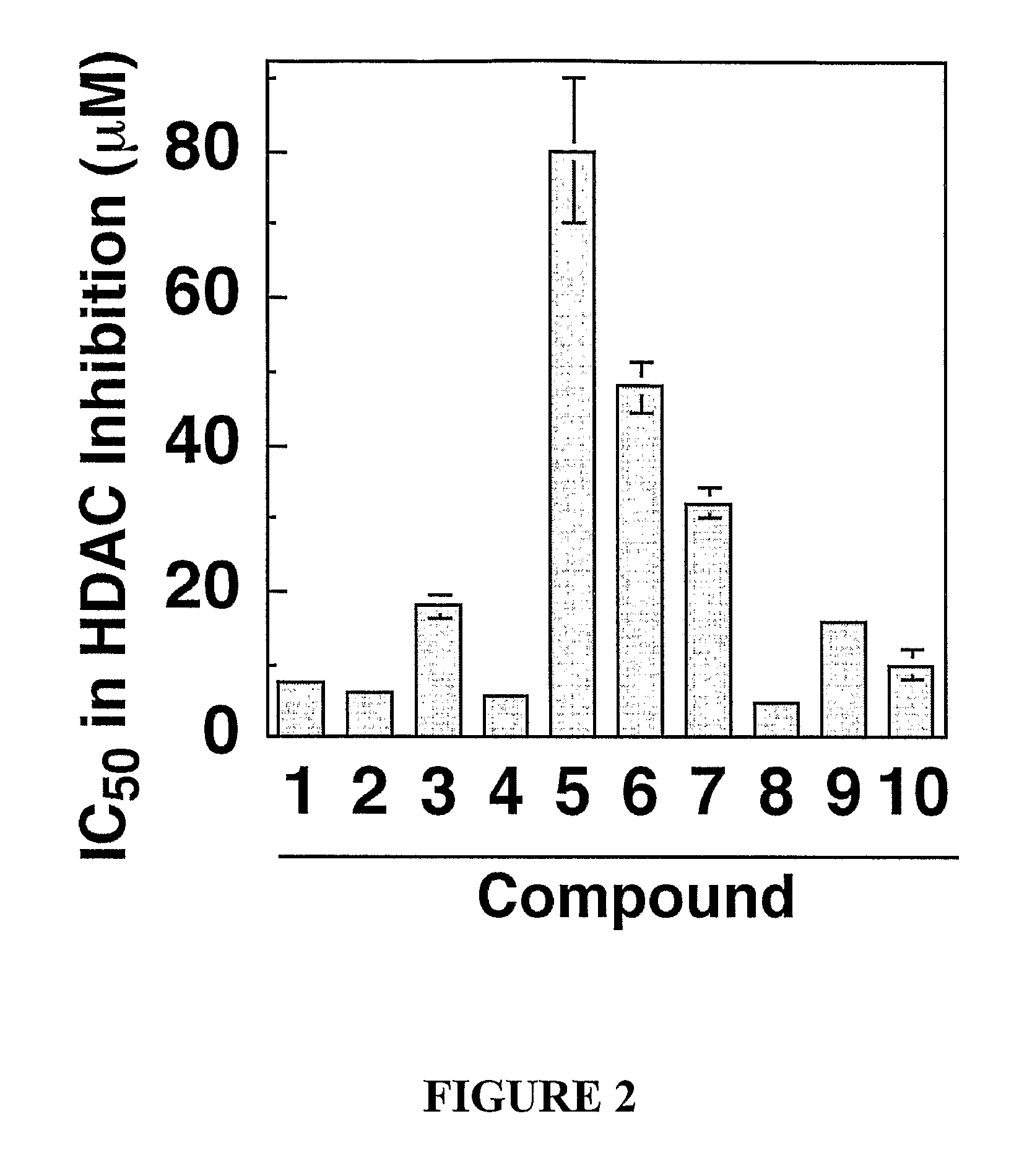Zn2Motif-Tethered Short-Chain Fatty Acids as a Novel Class of Histone Deacetylase
a short-chain fatty acid and histone deacetylase technology, applied in the direction of biocide, drug composition, cardiovascular disorder, etc., can solve the problems of transcriptional repression and limited therapeutic efficacy
- Summary
- Abstract
- Description
- Claims
- Application Information
AI Technical Summary
Benefits of technology
Problems solved by technology
Method used
Image
Examples
examples
Experimental
[0154] Chemical reagents and organic solvents were purchased from Aldrich unless otherwise noted. Nuclear magnetic resonance spectra (1H NMR) were measured on Bruker 250 MHz. Chemical shifts (δ) are reported in parts per million (ppm) relative to TMS peak. Electrospray ionization (ESI) mass spectrometry analyses were performed with a 3-Tesla Finnigan FTMS-2000 Fourier Transform mass spectrometer. Elemental analyses were within ±0.4% of calculated values.
[0155] Flash column chromatography was performed with silica gel (230-400 mesh). The ω-amino acid methyl esters were prepared from the commercially available acids using methanol / TMSCI, and (2-amino-phenyl)carbamic acid benzyl ester was synthesized from o-phenylenediamine and benzyl chloride formate according to standard procedures. Rabbit anti-acetyl-Histone H3 and H4 polyclonal antibodies were purchased from Upstate Biotechnology (Lake Placid, N.Y.), Rabbit anti-p21 antibodies were from Santa Cruz Biotechnology (Santa...
PUM
| Property | Measurement | Unit |
|---|---|---|
| Concentration | aaaaa | aaaaa |
| Cell proliferation rate | aaaaa | aaaaa |
Abstract
Description
Claims
Application Information
 Login to View More
Login to View More - R&D
- Intellectual Property
- Life Sciences
- Materials
- Tech Scout
- Unparalleled Data Quality
- Higher Quality Content
- 60% Fewer Hallucinations
Browse by: Latest US Patents, China's latest patents, Technical Efficacy Thesaurus, Application Domain, Technology Topic, Popular Technical Reports.
© 2025 PatSnap. All rights reserved.Legal|Privacy policy|Modern Slavery Act Transparency Statement|Sitemap|About US| Contact US: help@patsnap.com



